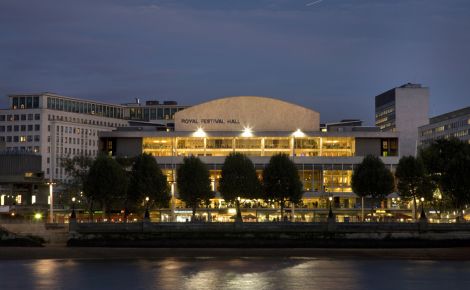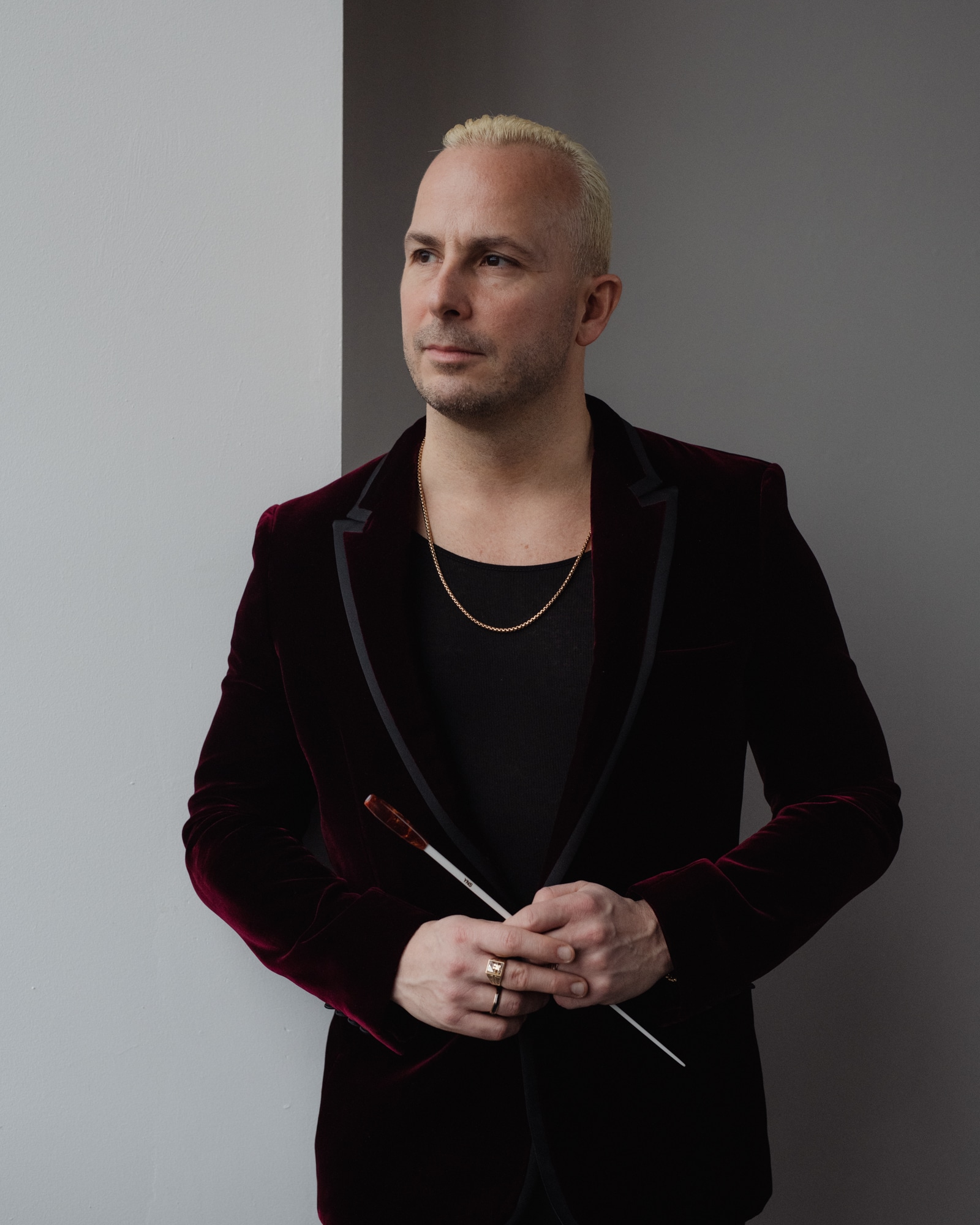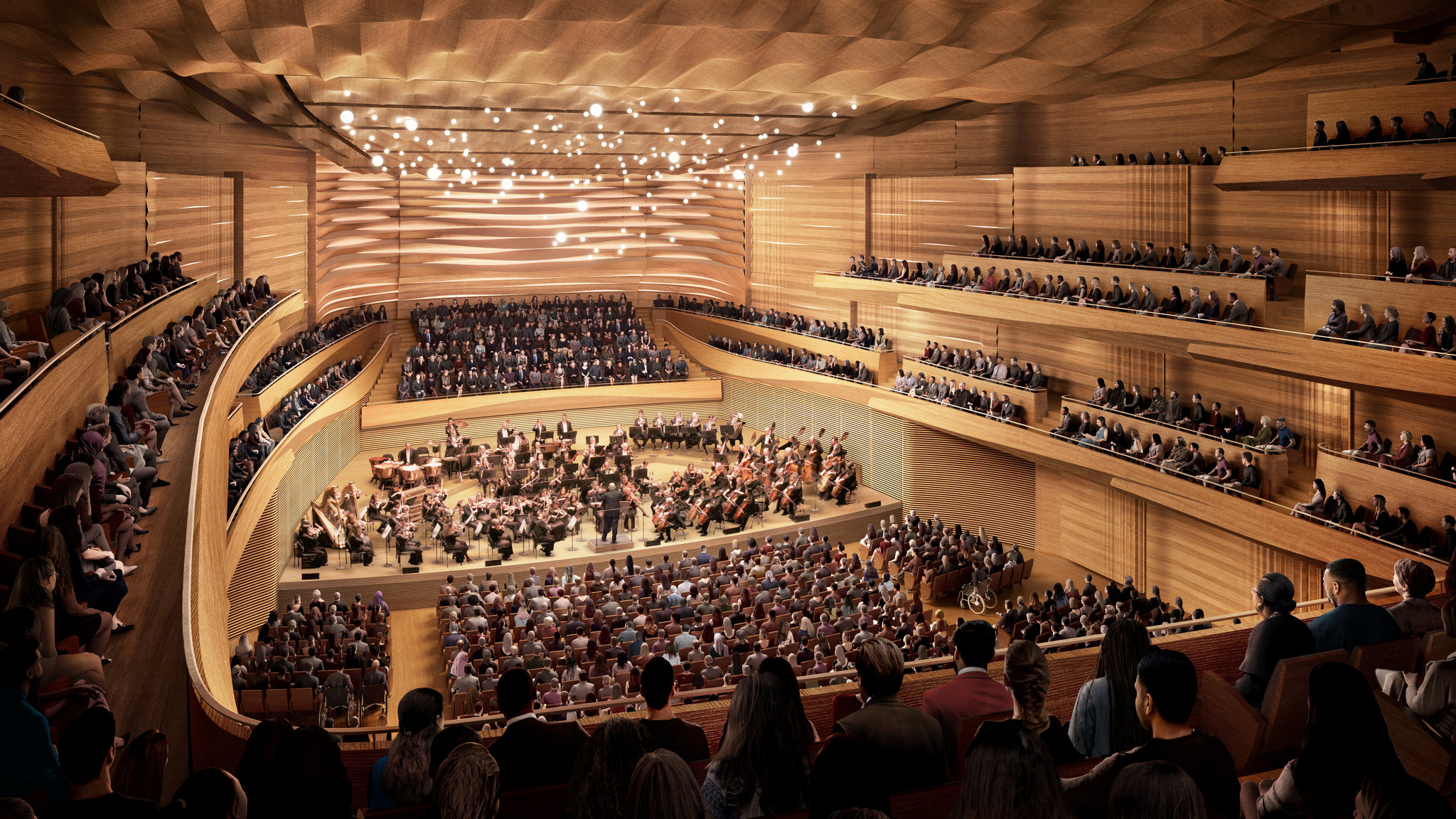Why London’s South Bank needs to go bust
mainI have written a blast in the Spectator today on the loveless arts centre that is the country’s biggest arts drain. Now begging the Government for rescue, it really needs to be allowed to sink. Here’s the kick-off:
I must have written about this subject 100 times in 30 years and I’m still having to restate the bloody obvious. London’s South Bank Centre, which has just gone bleating to the government for more money, is the biggest subsidy guzzler in the country and the despair of the rest of British arts.
The South Bank receives £19 million a year from the Arts Council, on top of the many millions that go to each of the so-called ‘resident ensembles’ that perform within it. What it does with the money is anyone’s guess because, as far as the eye can see and the nostrils can smell, the South Bank is now a fast-food mall with an occasional classical concert buried within it. How did it get so bad?…
Read on here.






That was an entertaining read (coming to the article as a curious American with no informed opinion on the South Bank). London’s equivalent of the Kennedy Center?
The South Bank is what happens when you put the Kennedy Centre a 20 minute walk from Broadway.
??
First of all, Lincoln Center is literally on Broadway, and it along with Carnegie Hall are walking distance from “Broadway” literal and metaphorical.
Second, so what? Broadway is second to none, without need of belittling opera or any other art form.
However it not the Lincon centre that is in question. You can’t throw a stick in Central London with out hitting an arts venue. London is not short of publicly funded arts venues. The point is that you are in direct competition with venues that are much better at putting bums on seats. The South Bank is too large and expensive to run to put on less commercial work only. So it needs to try and compete with the 40 West End theatres.
Lincoln Center is in New York. Kennedy Center is in Washington D.C.
Also, I don’t think Ron Swanson was belittling anyone, but perhaps comparing what kind of organizations the two arts centers are. (I think the Kennedy puts on some Broadway-type fare whereas Lincoln Center does not? But if the Kennedy were in New York, it might try to compete with Broadway anyway, with predictably pathetic results? Not sure if that’s what he was trying to say, but pretty sure he wasn’t trying to belittle any art form.)
Indeed, LC has a B’way type theatre, the Beaumont Theatre, which puts on successful B’way musical revivals.
We are talking about London, not New York, or any part of America here! Two completely different cultures as well as continents. Why do so many on here compare everything to America???? Some of you have never been to the South Bank but yet many of us have been to the Kennedy Center.
And by the way you mean the Lincoln Center – the Kennedy Center is in Washington, and I have been to both.
Having read the ‘Spectator’ polemic, can I query the passage about the ‘state-coddled National Theatre’ as less enterprising than this Bridge place. I visited London for 3 week stints at the 2018 and 2019 Proms, and at each trip went to a couple of stagings at the National. This is Britain’s flagship theatre, that gets around 25% subsidy per seat– far less than equivalent western European national equivalents. The Aussie ‘Secret River’ play had come from a run at the Edinburgh festival — I paid about 70 GBP for a semi central seat 3 rows from the stage — very reasonable considering the costs of the troupe coming from Sydney. In 2018 I paid 80 GBP for a goodish stalls seat at the equally stunning ‘Lehman Trilogy’. The NYC transfer of this show, with the same cast, had ticket prices of USD 299 to 399 according to a NYT review. A flagship theatre cannot purely go for experimental, ‘edgy’ stuff, under current financial conditions. Many years ago the RSC nearly went belly up after staging a run of Genet plays at the Barbican — I attended one, but there were only about 100 others for that matinee.
The problem for the South Bank is that London’s successful commercial theatres are within walking distance. I do agree you can’t keep putting on edgy plays only but non edgy plays are well served in London anyway. I think it’s a similar problem to the ENO to big a venue in the wrong place.
Sorry, how many of London’s commercial theatres are staging orchestral & chamber concerts? I must have missed this in their calendars.
So the Proms don’t exist. There is never any chamber music at any other venue in London. Yeah right.
Only once a year are the Proms, and they are a completely different audience funded by the BBC in what many would say is even a worse hall to perform it – and about 12 minute walk from the tube station in all weathers.
Ramesh Nair, interesting posts. I left you a post on the old Coriolanis board of May 29, now old and unfashionable. These boards have a shelf-life of about three days. It turns out Shakespeare wasn’t involved inBeethoven’s Coriolan Overture, which he composed in 1807 for a teragedy written by Heinrich Joseph von Collin in 1804. Who wins? VonCollin.
I also seem to have lost Dr Pauls. Oh, dear. Just as things were starting to get interesting. A pity.
Hi Edgar, yes, thanks I read your post. Yes, it would be nice for all if the SBC ‘Maginot Line’ was ‘Boulez-operahoused’ away and replaced by replicas of the Paris Philharmonie, Seine Musicale and Louis Vuitton centre for the RFH/Hayward/QE/Purcell/NT but the current financial crisis has probably moved all statement architecture for culture probably another generation into the future.
Back when I was still a medical student, on elective in London, the SBC staged a marvellous Ligeti festival. After one concert, I was chatting to random people at the bar in the SBC, when two guys approached me. They introduced themselves, one as in artistic management of the Philharmonia, the other an ex-orchestral cellist named Clive, now in arts admin. I was amazed anyone would solicit my uninformed opinions, but one replied that market surveys could only do so much, and they were interested in why someone with my accent, non-British shirt [ colourful ] and background was drawn to a Ligeti festival, and what did I value of the SBC. One remarked that this concert would lose perhaps 10000 pounds, but he viewed it as an artistic success for the value of music and the newer audience members it might inculcate — though such successes for financial reasons had to be well-spaced! ( Incidentally, people in arts admin in New Zealand where I live don’t spontaneously seek me out in the same manner — so the English really as aren’t as reticent in high cultural matters as stereotypes might seem.)
So there in one anecdote is a reason for the value of an arts complex like the SBC, though of course the orchestras take on the financial risk. The point is that the venue by virtue of its size and location attracts a wider cross section. London is a highly multi-ethnic city. I notice in the summertime the SBC programmes events that might attract black and South Asian audiences, and LGBTQ+ events.
Readers should understand that for events where ethnic minorities might see faces like themselves in the majority, as performers on stage, there is potent cultural signalling at play that by and large is appreciated by these audiences. The message is that ‘this place is largely devoted to western high culture, but we will also stage stuff that treats your cultural background as equally valid’. As a visiting university student I saw when I attended SBC concerts of sitar, gamelan, African drumming, Chinese Nan-Kouan song, how the audience changed in demographics for one hall, and mingled in the foyers with the usual classical music/ theatre/modern art crowd.
Well said, Ramesh. Funnily enough, I went to a couple of performances in the ‘Ligeti in Wonderland’ weekend, which I loved, and the audiences were so mixed, a lot of them young. Made me feel ancient, of course, but I just thought to myself: ‘This is what all audiences for classical music should be like……’.
“It was the public, after all, who paid from their LCC rates to have the place built in 1951. That public has been given no say in its destiny ever since.”
Typically, a London based complex, part of which was built as part of the Festival of BRITAIN not just by LCC ratepayer’s money, and added to in the sixties and subsequently renovated by general taxation from the whole of the country, that is seen as being the sole property of London. As are all ‘National’ Arts institutions based in London but subsidised by the whole ‘Nation’.
As an occasional visitor to London from the ‘provinces’ I really have little connection with the South Bank other than when there is a play at the National Theatre or an exhibition at the Hayward. I have been inside the RFH twice in over 40 years of visiting and so cannot comment on its acoustics which I am told are poor, but that is for regular audience members to know, whereas indirectly myself and millions of others merely pay to keep it open so that those that do attend can moan.
The LCC ratepayers, just as the London Council Tax payers did not and do not exclusively pay to build and support the London South Bank Centre, We all did and continue to do. Whether it stays open or closes is a decision for more than just the favoured, or it seems in this case, unfavoured few. Just as at some future date despite what has been said, the public purse will be expected to chip in to bail out the new plaything for Simon Rattle and the LSO.
And finally, just to show that this is not just an anti London rant, here in Manchester George Osborne gifted tens of millions of taxpayer £’s to build what already is a massively over budget white elephant for the biennial MIF and which whatever else might happen will find its way onto the ACE life support system in double quick time.
Interesting you should refer to The Factory in Manchester. I’ve looked at the plans and graphics several times and cannot for the life of me figure out how it is going to be used.
Maybe I’m just too old and unimaginative.
Still on the subject of Manchester and the ‘provinces’, it has been pointed out before in this blog (can’t find a reference, sorry) that the Royal Opera House has twice tried to create a base in Manchester, without success. Apparently, local organisations objected if I recall correctly. It appears that this would have gone some way towards appeasing concerns outside London and might even have turned out to be a better investment than The Factory.
I was living in Manchester when Covent Garden came to perform, and also brought the ballet. It was worked out that it was cheaper to bring all those in Manchester who wanted to go the opera, down to London, than to bring Covent Garden up. The Palace Theatre was closed in 1980 and was reordered and reopened to take the scale of the Covent Garden productions and chorus, but they only came the once – in 1982!
https://www.theguardian.com/music/2009/jun/25/lowry-manchester-royal-opera-house
“Ambitious plans by the Royal Opera House to create a northern outpost in Manchester were dealt a blow today after the Lowry arts centre publicly declared the project a direct threat to its existence and called for it to be scrapped.”
“but they only came the once – in 1982!”
Perhaps because it was only around three quarters full. I was there.
Norman, I can understand your fury at what the Southbank Centre does with its public money, but I think you protest just a little too much.
Let’s start though with your comment about the acoustics: municipal baths? Surely not. If only this were the case, we woúld have´a more satisfying experience in every Bruckner symphony. It’s the short reverberation time that is at fault, though things did improve slightly (ever so) after the ridiculous overhaul that cost an arm and a leg, and it is certainly better than the simply awful aural glare you get in the Barbican Hall.
Yes, they are pretty ravenous in terms of the money they swallow. I now pay the princely sum of 79 pounds annually for my basic membership. That gives me advance booking rights and streams of emails mostly about non-classical events. That fee has shot up in the last few years, way above the inflation rate.
The rot set in before the advent of Jude Kelly and her missionary zeal for causes not linked to classical music. Why this woman was appointed in the first place is beyond me, though I suspect that her love of “issues” was shared by those wielding political power at the time. The way the RFH in particular then degenerated into nothing more than a public concourse with nerds occupying foyers in search of free Wi-Fi, others keen to avail themselves of catering options and toilet facilities, and the creation of a ludicrous buggy park was nothing short of a scandal. Did classical music events as such, or attendance at them, increase as a result of this misguided branding of the RFH as a People’s Palace? It did not. Was the profile of the RFH as a leading centre of classical music in the world enhanced during the appalling Kelly tenure? It was not. Even the Barbican had more visiting orchestras from overseas than the Southbank regime.
What is, however, certainly needed is a measure of coordination, which was what was introduced in the mid-sixties. Nobody wants a stream of Tchaikovsky 5s in rapid succession just because a free market enables this to happen. Supporting the resident orchestras’ in their programmatic planning has been one of the few positives in recent years.
Since our aim must surely be to secure the livelihoods of all our fine musicians as soon as lockdown ends completely, I’m not sure that a laisser-faire attitude to the organisation and content of classical music concerts is the solution to the misery at Southbank. What we most definitely do not want is survival of the fittest.
I get the impression time and time again on reading these comments that invert snobbery against anything suggestive of ‘high culture’ (for lack of a better phrase) is a big UK problem in the arts and the BBC.
The SBC is the only arts centre in the UK to receive a grant from ACE. Why? To answer that one needs to go way back to its foundation in the 1950s. At that point the centre was just the Royal Festival Hall, a legacy of the 1951 Festival of Britain and was funded by the London County Council. In time the South Bank grew with the construction of the Queen Elizabeth Hall, the Purcell Room and Hayward Gallery. The LCC morphed into the GLC, the body that Mrs Thatcher’s government so hated. The GLC, under Ken Livingstone, actually made rather a good job of running the South Bank, opening up the hall in the 1980s in all sorts of ways. Many of us who worked there were sad to see its abolition in 1986.
At this point something fundamental occurred: the SBC became a client of the ACE and started receiving an annual grant in aid. In other words, the taxpayer started to cough up huge sums each year for an arts centre in London, and the only arts centre in the UK to receive money directly from central government. And at the same time, as many of us feared, it became the institution that it is today: in my view vastly self-important, greedy and massively overmanned; in fact an unelected Ministry of Culture.
Apart from CEO Nicholas Snowman’s role during the notorious Hoffman review of 1993-5 we should not forget that in 2004-7 the resident bands were booted out of the RFH into the QEH, with a massive financial downside (“not our problem”, said the SBC and ACE), in order to allow for the £111m refurbishment of the RFH, with a lot of help from the Heritage Lottery Fund.
The SBC’s current ACE grant is £19.2m. £19.2m! For what exactly? Let me place this figure in context. The Royal Opera House gets the largest grant in the land: £24.77m. They are the only body that receives more than the SBC. Moving down the hill as it were, the next in this league table after the SBC is the National Theatre (£17.2m), then the RSC (£15.45m), English National Opera (£12.8m), trickling down through the ranks to the LSO (£2.2m, but doubled by a matching grant from the City of London) and then on to the Philharmonia and the LPO receiving currently £2.04m. However, all these organisations have companies to fund, and artists to engage. AND THEY ALL PUT ON STUFF! The SBC is almost entirely a receiving house: other people put on their stuff there, AT THEIR OWN RISK. The SBC is, in arts terms, like a very expensive empty box.
But there is more. The SBC tells us that this figure represents just 37% of its income, so this means that its actual annual income is a huge £51.9m. The centre operates as a commercial organisation in much the same way as many other arts centres up and down the land, ie it rents out a space for promoters, orchestras or anybody else to hire for concerts or other events in its buildings. It then charges commission on tickets sold, and I believe that the commission is levied on all tickets, whether sold through the SBC box office or through their own websites. However, the SBC also receives rental income from the great number of bars, restaurants and other retail outlets within the centre. Presumably this accounts for the difference between its overall income of £51.9m and its ACE grant.
However, what is the justification for the ACE grant? Why should UK taxpayers up and down the land pay for an arts centre in London? As I stated earlier it is the only Arts Centre to be so treated. One unfortunate problem that the resident orchestras have with this huge grant paid out to the SBC is that many in their audiences believe that this money trickles down to the players. The truth is quite the reverse, as explained above. But as a result it actually makes it harder to justify the resident orchestras’ own need for ACE funding.
There has to be a far better and fairer model for funding the SBC; fairer for musicians and fairer for the taxpayer. But no one should hang around and wait for things to happen. The SBC has proved extremely successful in defending the value of its grant over all these years, and if ACE and the music business misses this opportunity to get a fairer settlement it may well be the orchestras who suffer, whilst the SBC sails away, secure in its ever-more-generous funding.
It would be good to be told – Freedom of Information Act? – how much money the Southbank Centre makes annually from its graduation ceremonies, TV shows, business conferences and other non-classical events, and how much it charges the resident orchestras to use the RFH. Am I the only one to suppose that if you have resident orchestras you should not be charging them anything to use “your” hall?
Alexander, note 4 of the accounts will give you a reasonable estimate of your first questions, note 3 the second part (both details of p46): http://apps.charitycommission.gov.uk/Accounts/Ends09/0000298909_AC_20190331_E_C.PDF
In what sense do you mean that Southbank Centre is the only arts centre with ACE funding? The National Portfolio has 187 Combined Arts organisations, many of which are arts centres.
Indeed it does, but the organisations that ACE supports are not concert venues like SBC. Check them out on ACE’s own website: Royal Albert Hall, Birmingham Symphony Hall, Bridgewater Hall, Poole Lighthouse, Sage Gateshead, Liverpool Philharmonic Hall, Bristol Colston Hall. So the list goes on- nothing from ACE. They receive grants from their locality, but not from central funds. Oddly enough, I find that the Barbican gets a bit, but it’s only £480,000; a drop in the ocean compared with the SBC’s £19.2m
Replying to Michael Turner:
The ACE NPO list includes:
As Combined Arts organisations, Poole Arts Trust (Lighthouse) receives £342,213 pa and University of Warwick (Warwick Arts Centre) receives £492,114 pa.
As Music organisations, North Music Trust (Sage Gateshead) receives £3,512,122 pa, Bristol Music Trust (Colston Hall and St George’s) receives £325,000 pa, and Performances Birmingham (Symphony Hall) receives £80,464 pa.
The money for Birmingham Symphony Hall is targeted support for its jazz programme (this money used to go to a separate organisation that merged into SH a few years back).
The funding for The Sage also covers its full time chamber orchestra the Royal Northern Sinfonia.
The funding for Warwick Arts Centre covers its full programme – including lots of theatre, cinema etc. I suspect quite a small amount goes on music.
So yes the South Bank is in a category of its own – though the City of London’s funding to the Barbican is of a similar order I think.
It’s a little more – Barbican receives more than £20m from the City of London, which is just as much public money as ACE funding is.
My reply to Kenneth Griffin seems to have got lost somewhere. I think I wrote to point out that these sums he mentions are a) very small compared to SBC’s £19.2m, apart from that to Northern Arts Trust, which Stephen Maddock now writes about. And b) that they are made to separate, albeit maybe linked organisations. Unlike the SBC, who it appears to me are be able to spend ACE’s largesse in any way they choose.
Spot on Norman! well written and informed.
Bravo for airing and saying it as it is.
Thank you!
Absolutely agree – it is an eyesore ( built inour worst period of architecture) and acoustically dreadful – a good opportunity to start again and maybe find an exit from the Coli which so drains the resources of ENO?
I’d grade the acoustic as good in places and not so good in others. In terms of concert halls I visit I would rate it above Bedford and Cambridge Corn Exchanges and the Barbican Centre but not as good as Symphony Hall in Birmingham and the Sage in Gateshead. It isn’t dreadful for the audience and the resident orchestras certainly produce some wonderful performances in it.
Does it sound as good as the Fairfield Hall?I am sure I heard Solti and the LPO there in the late 70’s and it sounded pretty good.
“…. ( built inour worst period of architecture) and acoustically dreadful – a good opportunity to start again and maybe find an exit from the Coli”
But the RFH is a Listed buiding, hogging the best site for a concert hall in London. Not sure about this bit I believe only the Home Secretary can overrule listed building status. I don’t see that happening.
So far as the Coliseum is concerned, I understand that ENO owns the freehold. Not an insurmountable problem, but a problem nonetheless.
It’s sad when you consider what could be created on the South Bank, and the problems that could be solved – a sensibly sized home for the ENO (I’m thinking of Glyndebourne) with a versatile configuration, and a concert hall with first class acoustics seating around 2,000. However, the chances of any government or local authority having sufficient confidence in classical music and opera to go ahead with such a project without feeling the need to dress them up as some sort of apologetic ‘people’s palace’, like we have now, are virtually nonexistent.
(The ENO should also be allowed to tour, if it is still prevented from doing so.)
It’s easy. When the Houses of Parliament at Westmnister have to close due to massive remedial work. The MP’s can use the concert hall and the Lords, QEHall. There’s bags of room for offices. Save an awful of money and when Westminster has been sorted the SBC can be knocked down and a new hall built with excellent acoustics and much less wasted space.
If the SBC closes down it won’t be rebuilt as an arts venue.
SBC could be rebuilt in place of the monstrous Palace of Westminster (as NBC), Parliament remaining in the present RFH.
Norman’s ‘Spectator’ piece is published in a guest column, where some controversialist gets to rant on a subject close to their heart, appropriately called ‘The Heckler’. It’s often very funny. That’s all you need to know really. Still, given how long Norman has been banging on about the SBC, with little to show for it (thank goodness!), I salute his steadfastness.
At this stage, I think you seem quite content with the idea that London’s orchestral heyday is very much at an end and that we should drift into a US style model. I don’t think this is as good a thing as you believe it is. See Sam Mendes in the FT today about involving the government as a pseudo-private financial backer.
Ramesh Nair — I answered your post last night but lost it somehow; this is a shorter reconstruction.
I’m glad they asked you about Ligeti and not me. Your SBC experiences give a new meaning to concert-going even for London.
I’ve heard concerts here of koto, sitar, gamelan, and a tall three-stringed Chinese thingee. The gamelan ensemble of Northwestern University sat strung in an arc at Orchestra Hall. A review next day had the wit to say the stage looked like the kitchen of a Thai restaurant.
I know that ragas don’t modulate but only get faster, that North and South Indian music differ, and that you’re supposed to like one better than the other but can’t remember which. Northwestern’ s orchestra often betters the CSO in the same works, e.g. Shostakovich 11th and Mahler 3rd.
Did you find Auden’s “In Memory of W. B. Yeats”? Or perhaps know it already? I’ve liked some recent fiction by Indian writers.– “The Cat’s Table” by the author of “The English Patient”; Vikram Seth’s “An Equal Music”, and I think “Call Me By Your Name”, if it’s author is actually Indian. And of course Kipling’s “Kim” and E. M. Forster. I remember Bertrand Russell saying of Nehru, “He’s pretty good on anything that doesn’t involve India.”
Stay safe in Ne Zealand and keep posting. I just read of the Samoan rugby team’s struggles to get home from a match in Perth by way of N.Z. and getting double-quarantined., which must be octeened. Are you on North or South Island, and are their musics different? Mt. Egmont or Mt. Cook? And that gorgeous Milford Sound somewhere betwixt or between. The Anglo-Nepalese Everest expedition of 1953 trained on Mt. Cook, at least Emund Hillary did.
It’s still passing strange that Norman’s “Coriolanus” board of May 29 about Beethoven and Shakespeare ran for days and got 25 posts before someone (modesty forbids) remembered it wasn’t Shakespeare’s play at all but Heinrich Joseph von Collin’s that Beethoven wrote his overture for. Oh, well now there then. It WAS the same Coriolanus, but Von Collin won.
Spot on again Norman except, in 1990, the Tooley Committee appointed the London Philharmonic SOLE resident of the RFH. It was not until 1995 that the Philharmonia persuaded the South Bank to have a joint residency. I had bitterly opposed two resident orchestras and the Tooley Committee agreed.
I left in 1992 and everything went pear shaped from then on….